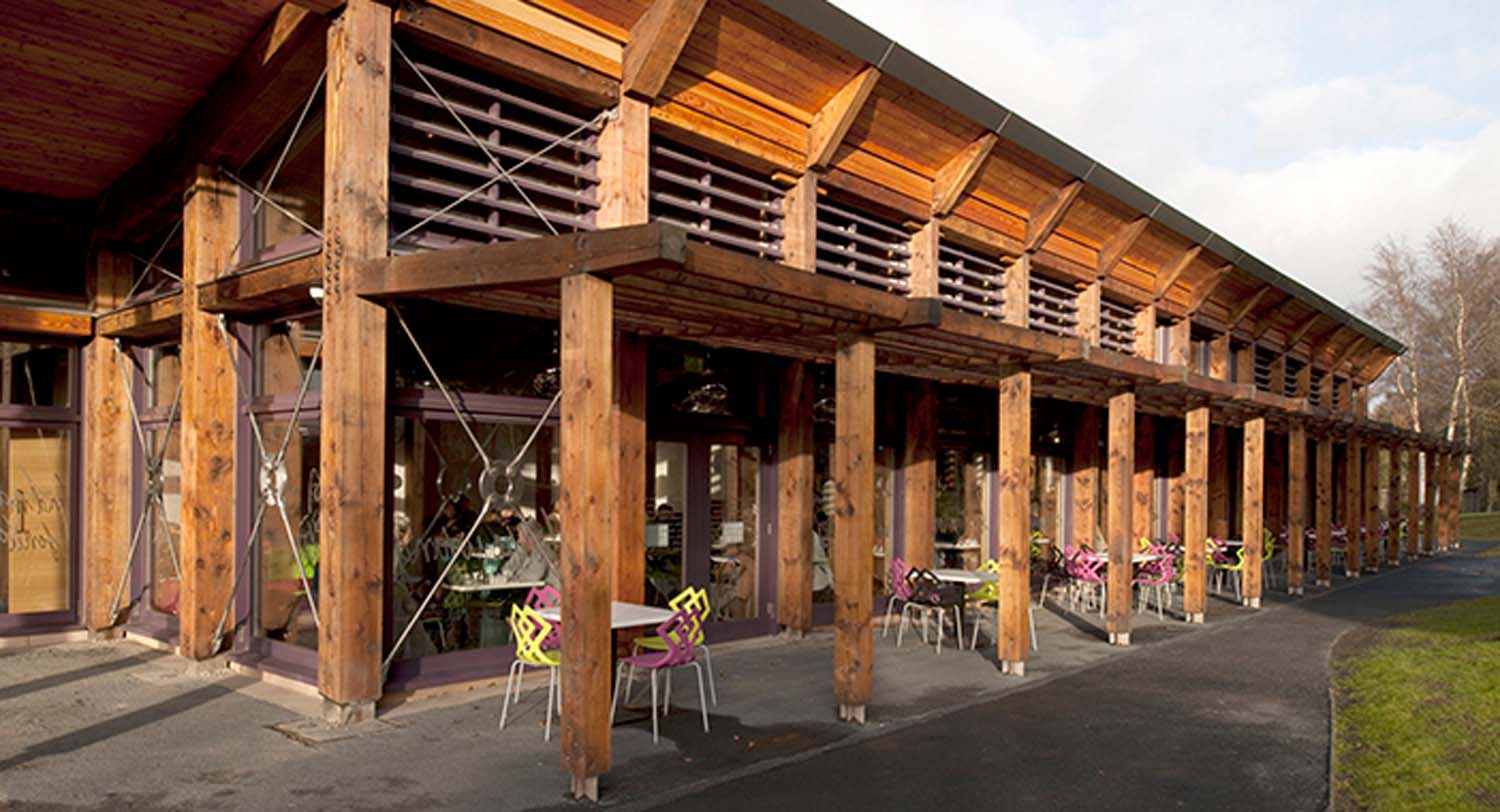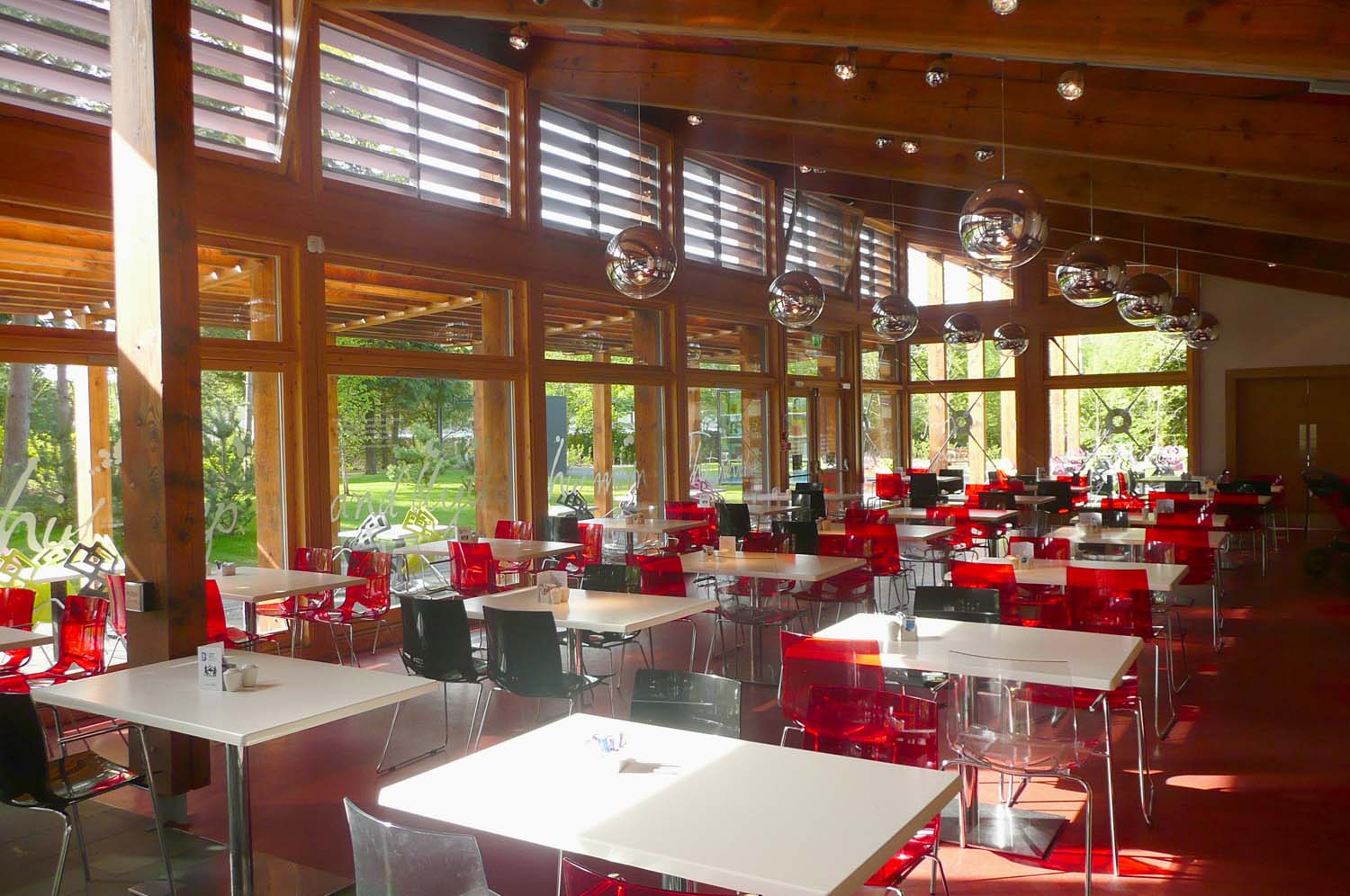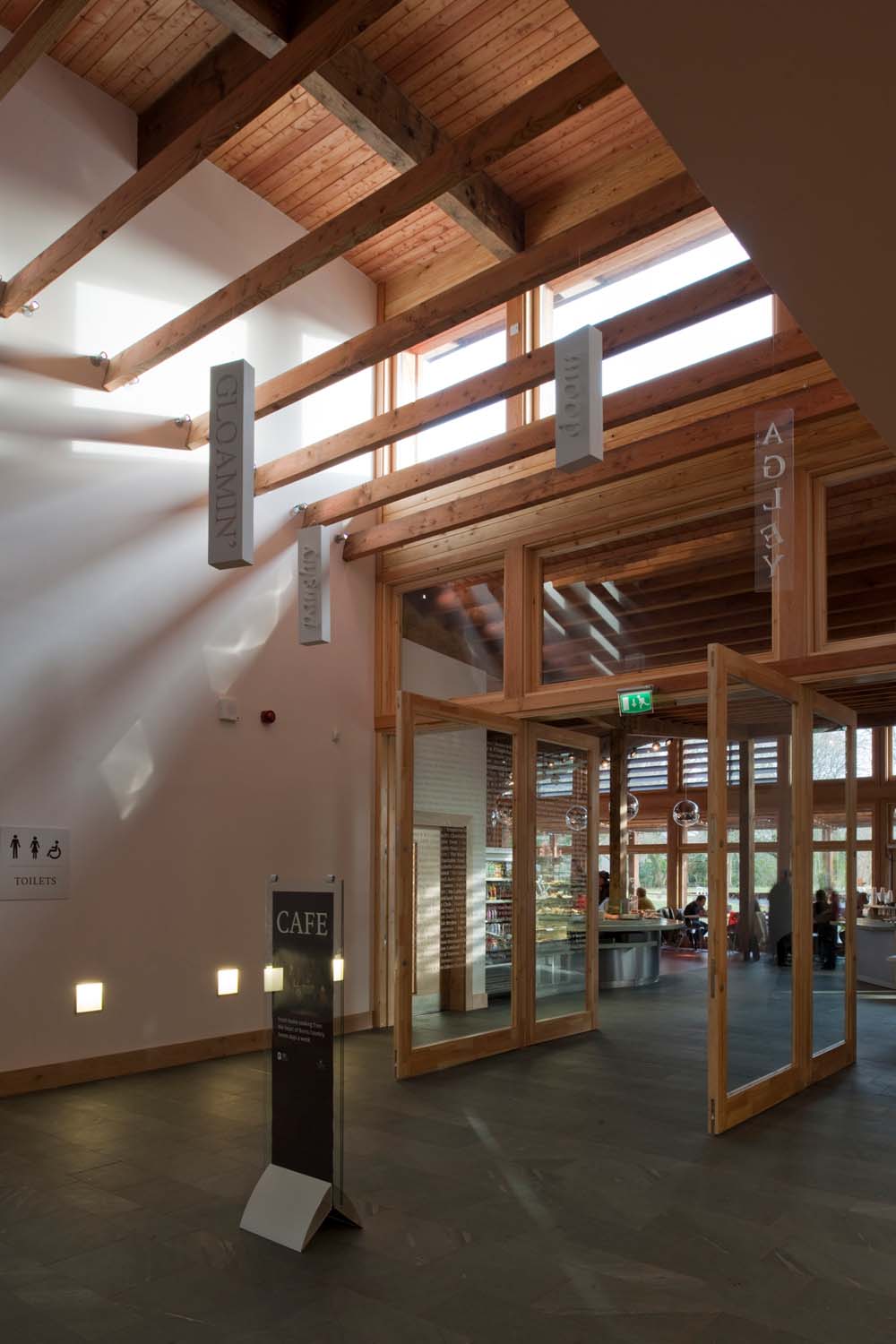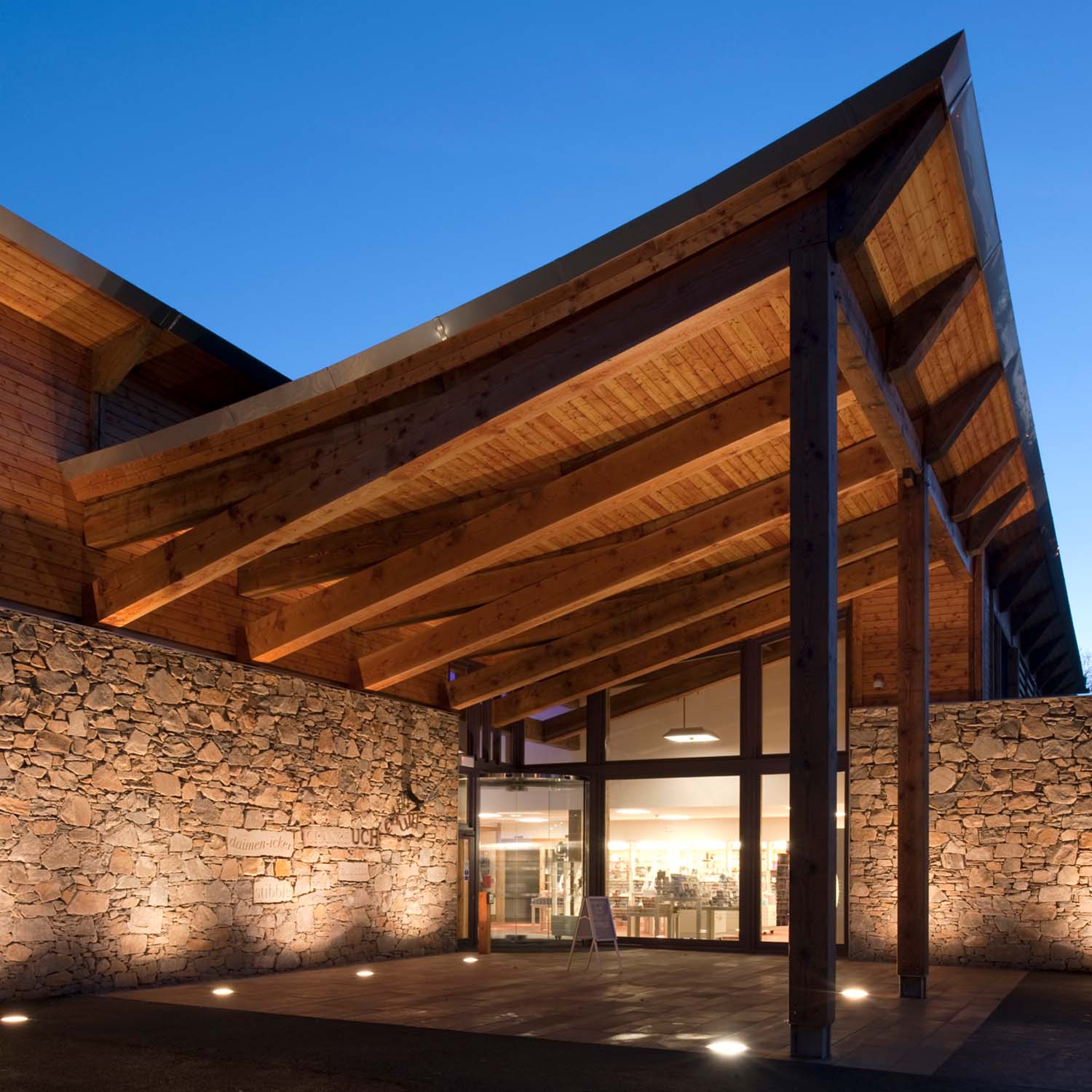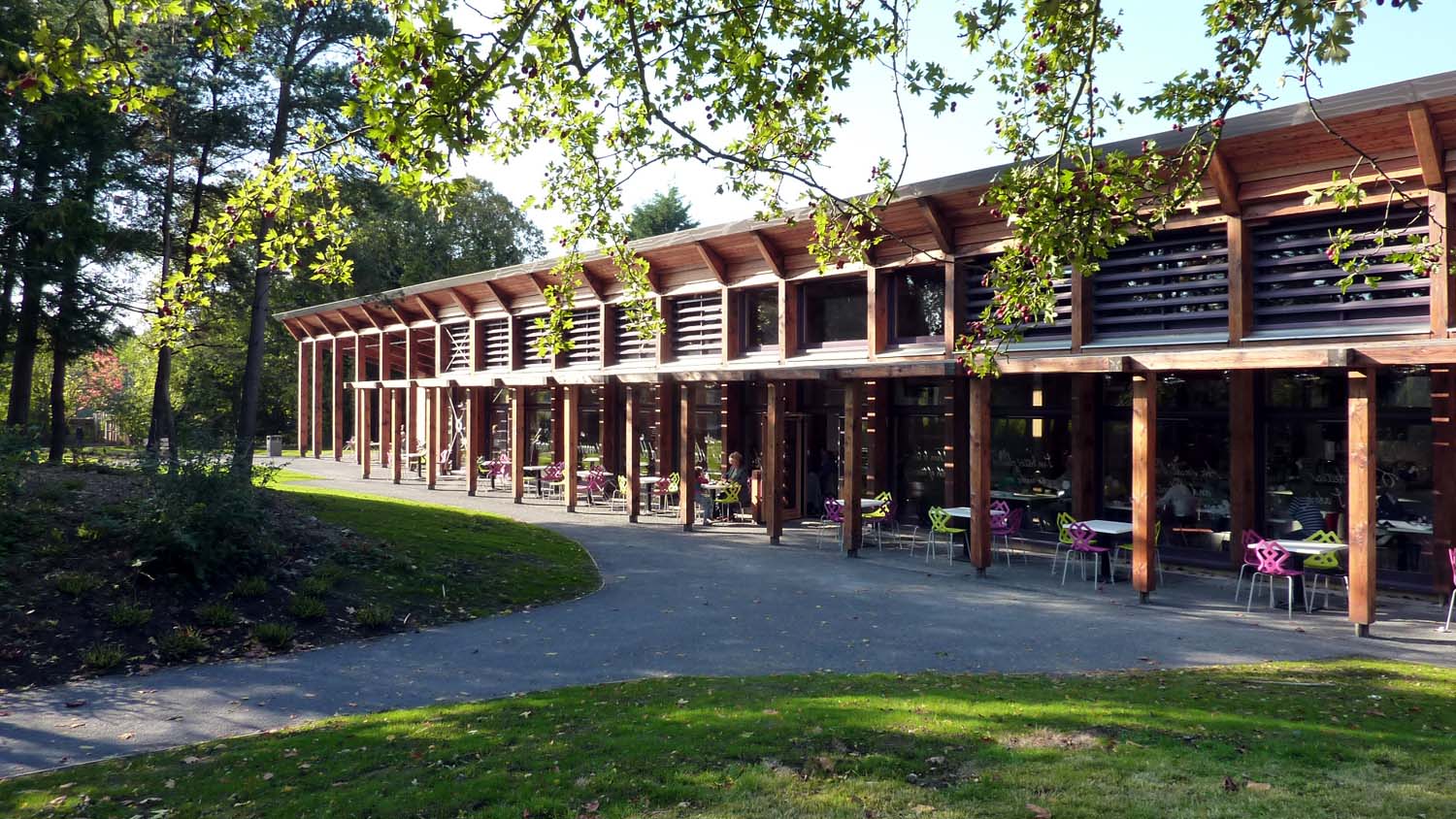The Robert Burns Birthplace Museum is designed as a landmark building and a welcoming portal for the Robert Burns National Heritage Park.
It takes advantage of the strategic infrastructure and beautiful gardens of the existing Tam O’Shanter Experience while promoting the other aspects of the park, especially Robert Burns’ birthplace: Burns Cottage.
The building has elegant curving and interlocking sedum covered roofs, supported by a green Douglas fir frame and timber panels. It shelters a large exhibition space celebrating the life and works of the national bard, and a public space opening to the mature garden.
Timber technologies
Timber is used throughout the building, with only the junctions between columns, beams and walls being strengthened with steel brackets.
The green Douglas fir structure used in the reception hall and café was grown in Thirlmere and Braithwaite in the Lake District. It was also cut and machined into shape near Kirriemuir in Angus. The structure of the rest of the building is of European redwood.
The windows and timber louvres are redwood and European oak manufactured nearby in Kilmarnock. The external cladding is Scottish larch treated naturally with linseed oil.
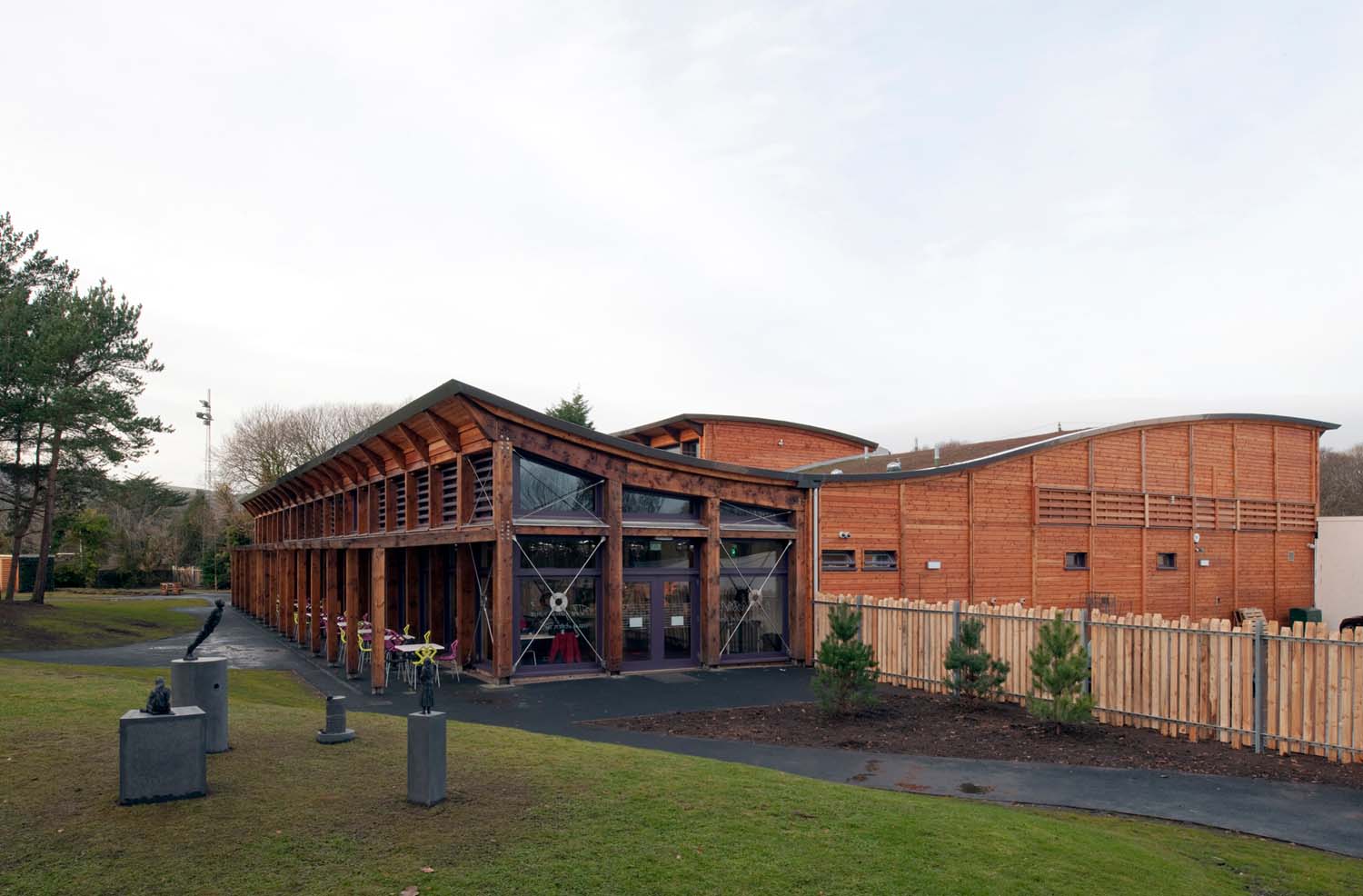
Special timber-related features
The sustainable agenda for the museum is achieved through the design of passive architectural systems. It carefully integrates technology and the use of passive solar gain and natural ventilation.
The architects also enforce this by maximising the use of local and natural materials, such as Scottish Douglas fir and larch for structure and cladding.
The building continues the sustainable use of timber in the surrounding external space. Here timber palisade fences are constructed using untreated timber from site clearance, including:
- western red cedar
- silver fir
- grand fir
- Scots pine
- goat willow
- ash
A library of sustainable building materials
Our website includes a web-based resource that showcases sustainable, traditional, innovative, recycled and low carbon building materials. If you are looking for inspiration or information on different types of materials to consider for your project, visit our materials library.

